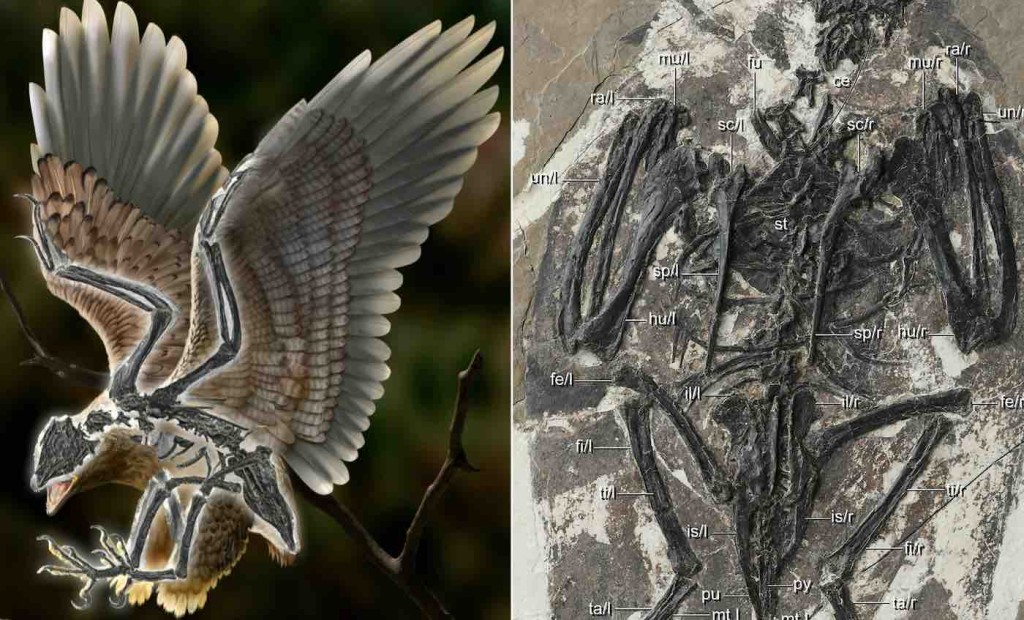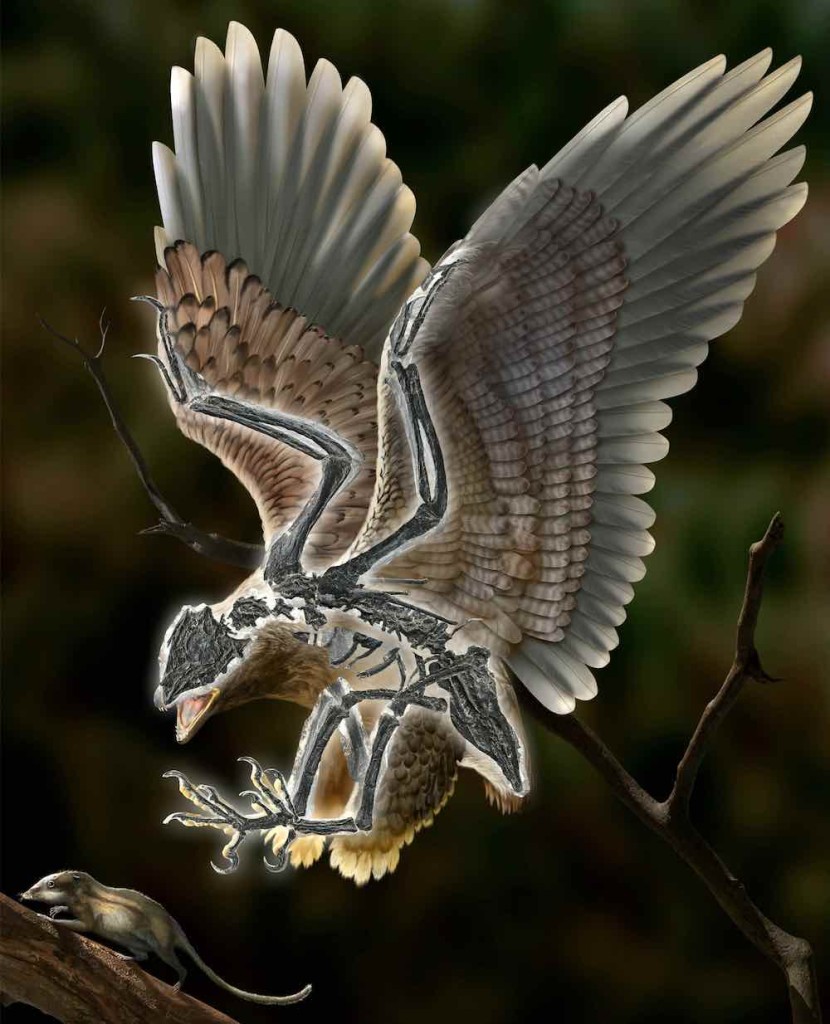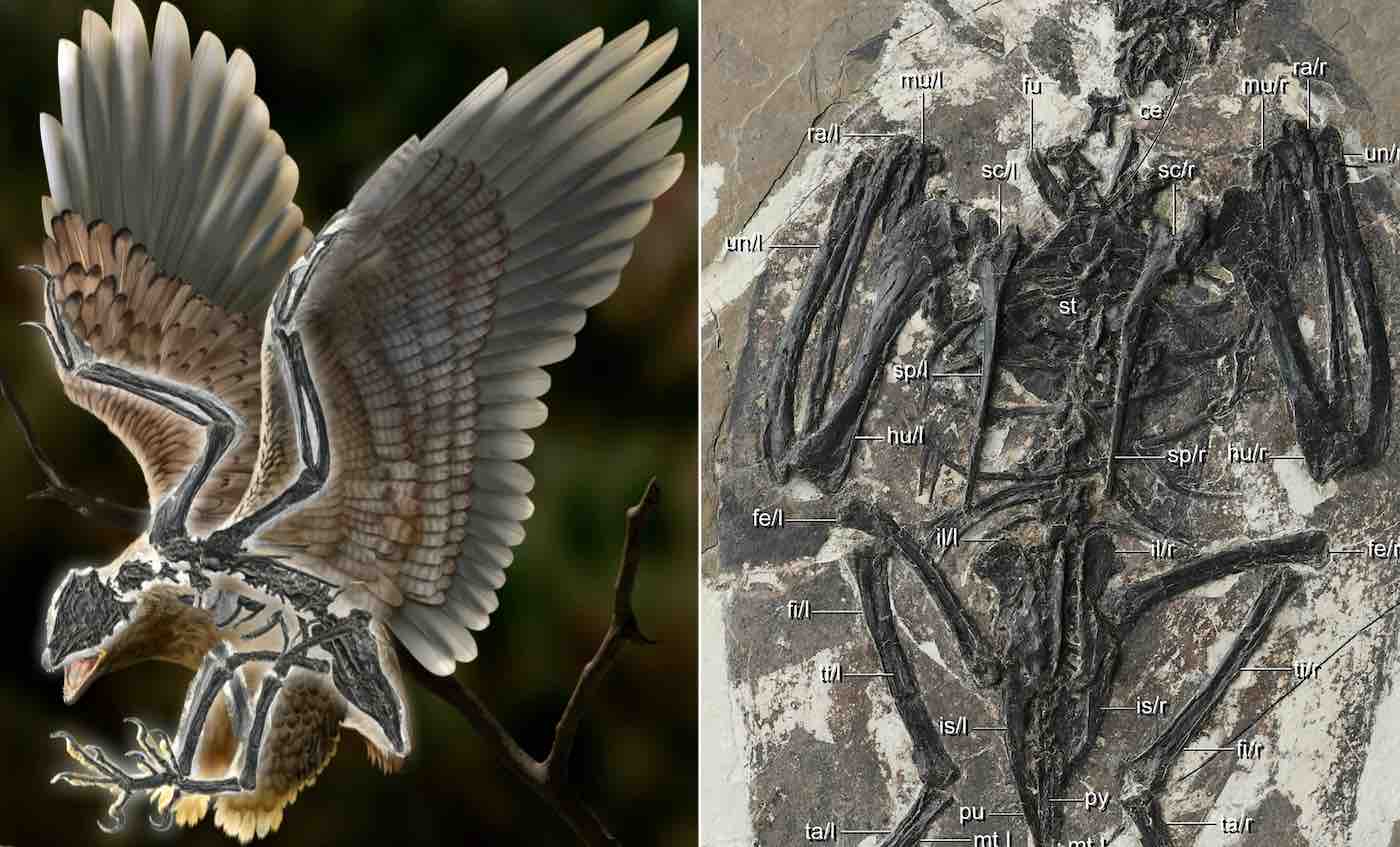
The evolution of dinosaurs into birds is a transition that encompasses such dramatic morphological changes that paleontologists are still scratching their heads to understand how the fantastic event occurred.
Now, a new 120-million-year-old fossil of a creature in China, called ‘bizarre’ by scientists, shines fresh light on the mystery with its T-rex-like skull attached to the body of a bird.
Named Cratonavis zhui, the chicken-sized hybrid had long shoulder blades, or scapulas, and claws. But its large skull was shaped in an almost identical way to that of T Rex and other meat-eating theropods.
The fossil, with its surprisingly elongate shoulder blade (scapula) and first metatarsal, makes it stand out from all other birds—including fossil ones—and fills in some of the gaps as to how some dinosaurs evolved into birds.
The news, published in Nature Ecology & Evolution on Jan. 2, describes a study conducted by paleontologists from the Chinese Academy of Sciences.
“The primitive cranial features speak to the fact that most Cretaceous birds such as Cratonavis could not move their upper bill independently with respect to the lower jaw,” said lead author Dr. Li Zhiheng. “This is a functional innovation widely distributed among living birds that contributes to their enormous ecological diversity.”
In the avian evolutionary tree, Cratonavis came before Ornithothoraces, which evolved to have many traits of modern birds.
Birds have been dubbed ‘living dinosaurs’; the first primitive species looked like a small, feathered dinosaur. Their mouths still contained sharp teeth. But over time, birds lost them and evolved beaks.
POPULAR: At Long Last, Paleontologists Find the Remains of a Swimming Dinosaur—’a Cretaceous Cormorant’

Corresponding author Dr. Wang Min commented on the shoulder extension discovered in the fossil: “The scapula is functionally vital to avian flight and it conveys stability and flexibility.
“We trace changes of the scapula across the Theropod-Bird transition, and posit that the elongate scapula could augment the mechanical advantage of muscle for wingbone retraction and rotation.
“It compensates for the overall underdeveloped flight apparatus in this early bird, and these differences represent morphological experimentation in flight behavior early in bird diversification.”
LOOK: ‘Impossible Fossil’ Preserves the Exact Moment the Dinosaurs Died: ‘It’s Absolutely Bonkers’
The study also found the first metatarsal (big toe) was subjected to selection, during the dinosaur-bird transition, to favor a shorter one.
It then lost its evolutionary flexibility toward change once it reached optimal size—less than a quarter of the length of the second metatarsal.
Co-author Dr. Thomas Stidham said: “It may have resulted from conflicting demands associated with its direct employment of the first toe in locomotion and feeding.”
For Cratonavis, it likely stemmed from a selection advantage for catching prey. It was a carnivore that ate small reptiles, amphibians, mammals and insects.
RELATED: This 120-Million Year Old Bird/Dinosaur Hybrid Is Teaching Us How Birds Came to Be
The abnormal anatomy preserved in the fossil highlights the breadth of skeletal plasticity in early birds, explained co-author Dr. Zhou Zhonghe.
He said: “Changes in these elements across the theropod tree show clade-specific evolutionary lability resulting from the interplay among development, natural selection and ecological opportunity.”
Cratonavis stands out from all other birds—including fossil ones—illuminating how our feathered friends evolved from the largest animals that ever roamed land.
DON’T MISS the Chance to Fly This Wonder to Friends on Social Media…




















